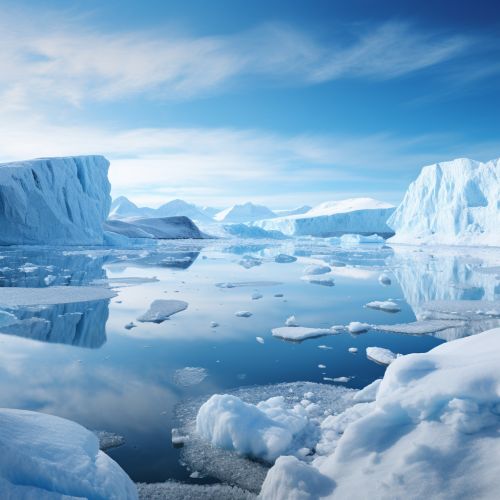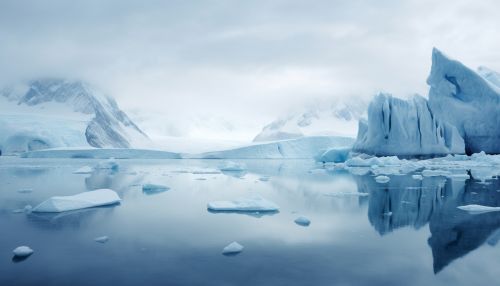The Science of Earths Subglacial Lakes and
Introduction
Subglacial lakes are bodies of water that exist beneath glaciers and ice sheets. These lakes are significant features of the Earth's cryosphere, and their existence can have substantial implications for the dynamics of ice flow and the habitability of extreme environments. The study of subglacial lakes, therefore, is a crucial aspect of cryospheric science, geomorphology, and astrobiology.


Formation and Characteristics
Subglacial lakes form when heat from the Earth's interior melts a portion of the ice sheet from below, creating a body of water that remains liquid due to the pressure exerted by the overlying ice. These lakes can range in size from small ponds to vast lakes comparable in size to the North American Great Lakes.
The water in subglacial lakes is often highly saline, due to the concentration of salts and other dissolved materials. The pressure and low temperatures in these environments can also lead to the formation of a unique type of ice, known as Ice VI, which is denser than ordinary ice and can exist at temperatures well below the normal freezing point of water.
Distribution and Discovery
Subglacial lakes are found beneath ice sheets worldwide, with the majority located in Antarctica. The largest known subglacial lake, Lake Vostok, is located beneath the East Antarctic Ice Sheet and is roughly the size of Lake Ontario.
The existence of subglacial lakes was first proposed in the 19th century, but it was not until the advent of ice-penetrating radar in the mid-20th century that their existence was confirmed. Since then, over 400 subglacial lakes have been identified, primarily through the use of remote sensing techniques.
Ecological Significance
Subglacial lakes are of considerable interest to biologists, as they represent extreme environments that may harbor unique forms of life. The high pressure, low temperature, and absence of sunlight in these environments create conditions that are inhospitable to most known forms of life. However, recent research has revealed the presence of microbial life in several subglacial lakes, suggesting that these environments may be more biologically active than previously thought.
Implications for Ice Dynamics
The presence of subglacial lakes can have significant effects on the dynamics of overlying ice sheets. Water in these lakes can act as a lubricant, accelerating the flow of ice towards the sea. This can potentially contribute to sea-level rise, making the study of subglacial lakes important for understanding the potential impacts of climate change.
Exploration and Study
The exploration of subglacial lakes presents significant technical challenges, due to the thick ice cover and remote locations of these lakes. However, several successful missions have been conducted to sample the waters of subglacial lakes, using specially designed hot-water drills to penetrate the ice. These missions have provided valuable data on the physical and biological characteristics of these unique environments.
Future Research Directions
Future research on subglacial lakes is likely to focus on further exploration and sampling, as well as the development of new techniques for remote sensing and in situ study. There is also increasing interest in the potential for subglacial lakes to serve as analogs for extraterrestrial environments, such as the ice-covered oceans of Europa and Enceladus.
